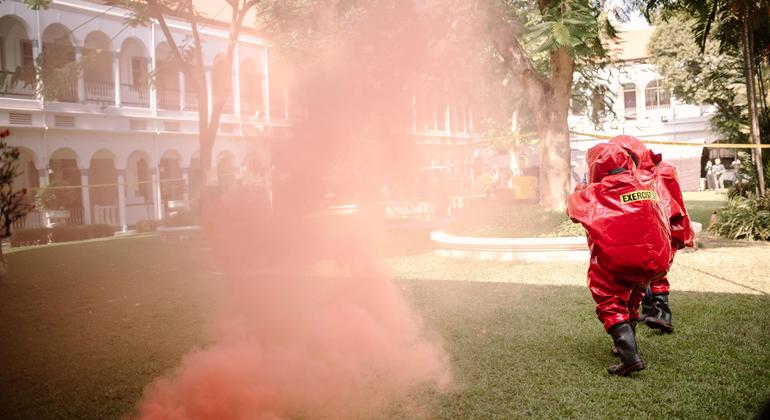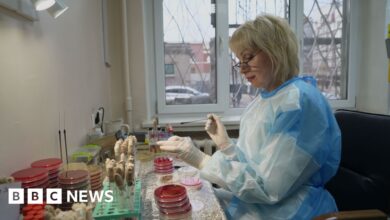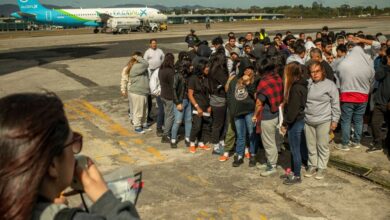Testing rapid response to chemical terrorism threats

On a normal day in Semarang, Indonesia, a few train passengers began to feel nauseous. Others nearby said they couldn’t breathe. Five people fainted. One was unresponsive. Minutes later, a miniature car wheezed past them, followed by a group of men in orange spacesuits. They were looking for bombs.
This is a simulation of a fictional chemical terrorist attack.
“The threat of chemical terrorism is real,” said Niki Esse de Lang, UN Office on Drugs and Crime. UNODCregional counter-terrorism coordinator for Southeast Asia and the Pacific. “To combat it, we need a solid, integrated response from all stakeholders.”
A very real threat
Indonesia is testing its ability to respond to such threats through simulations involving representatives from government agencies and the private sector.
So far, two events have taken place in Semarang in recent months, jointly organized by UNODC and the National Counter-Terrorism Agency (BNPT) of Indonesia, with the support of the Indonesian National Police Mobile Brigade (Brimob-Polri).
Since 2011, at least eight chemical terrorism incidents have occurred in Indonesia, and international terrorist groups, including ISIL, have used chemical weapons in Iraq and Syria. In 1995, the toxic chemical compound sarin was used by members of the Aum Shinrikyo movement in the Tokyo subway in Japan, killing 15 people instantly and injuring more than a thousand others.
The same chemicals used in legitimate industries, such as mining, agriculture, or pharmaceuticals, can also be used by terrorists. For example, chlorine, commonly used in water treatment facilities, can also be used to make chemical weapons.
This complex threat requires close cooperation between governments and the private sector at the national, regional and international levels.
Prepare for chemical terrorism
Outside the train in Semarang, scores of people in protective gear have arrived for training. The scene is busy. Some are setting up containment areas, others are setting up decontamination stations and another group is providing medical assistance.
Some are opening laptops and tactical gear to measure the air and potentially contaminated surfaces, while one group is drawing boundaries on the floor in red, yellow and green, depending on the level of contamination detected.
A miniature vehicle with sensors and cameras is moving around, taking samples and helping outside experts determine the level of toxicity. Nearby, a team in yellow suits is sprayed by colleagues before carefully removing their thick protective clothing.
‘A single entity cannot do this’
These responders come from different units and agencies: police, military, counterterrorism, bomb disposal, forensics, medical, fire and public infrastructure security.
All stakeholders, not just the security forces, must be prepared to respond to such terrorist acts.
“This training is necessary because of the threat of this type of terrorism,” said Edi Suranta Sinulingga, commander of the chemical, biological, radiological and nuclear unit of the Indonesian National Police. “Incidents are happening more and more in Indonesia, so all parties involved, not just the security forces, must be prepared to respond to such terrorist acts.”
Each ministry, agency, or organization has different procedures or ways of responding.
“A well-coordinated response to such a complex attack requires close cooperation between agencies,” said Niels den Hollander, counter-terrorism expert at UNODC.
“A single entity cannot do this.”

Indonesian teams participate in exercises to prepare for potential chemical terrorist attacks.
Planes, trains and hotel rooms
Another recent simulation took place in a hotel room, and another took place last summer on an airplane. The former involved more complex elements, such as a fictional perpetrator wearing a gas mask and carrying a gun, suspicious hazardous materials, hostages in an airport, and explosions that created real smoke on a training ground.
“As health workers, this training is invaluable,” said a response health worker at Kariadi Hospital in Semarang. “We need to follow strict safety protocols before entering contaminated areas to help victims. Otherwise, we could become victims.”
More in-depth sessions are expected to take place, focusing on crime scene management for first responders to ensure they know how to accurately record and collect evidence at the scene for possible inclusion in criminal proceedings.
“By bringing these agencies together to conduct exercises, we facilitate a process where experts feel comfortable making mistakes, learning from them, identifying gaps, and building programs to fix them,” said Dimas Andianto, a program officer at UNODC. “After all, it is much easier to address and learn from a mistake in an exercise than in real life.”
Learn more about UNODC’s work in Southeast Asia and the Pacific This.


